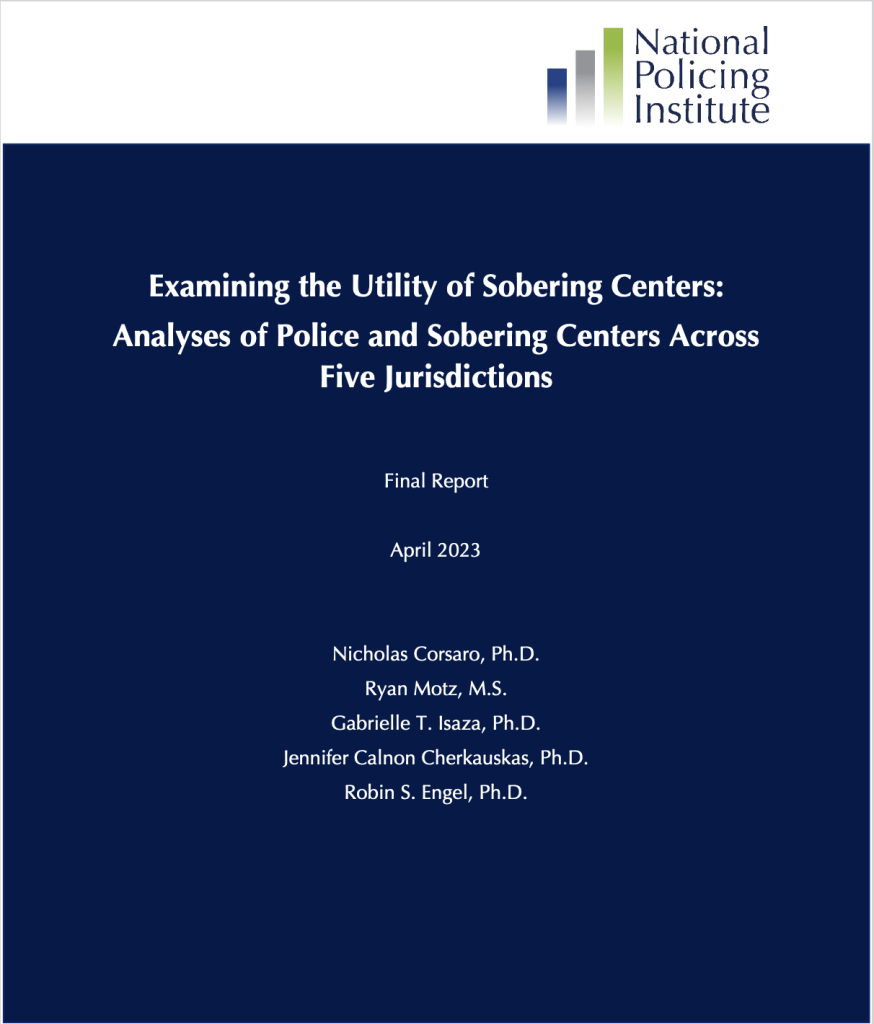Article Summary by Shannon Smith-Bernardin, Ph.D, RN, CNL – Director of Sobering Program Design

A recent evaluation by the California Office of Statewide Health Planning and Development found a 66.7% increase in emergency department visits for acute alcohol intoxication. [SS1] The number of non-fatal ED visits for opioids and for amphetamines increased nearly 60% (2019 to 2020) and 50% (2018 to 2020), respectively. And while the Department of Justice [SS2] reported a continued decline in arrests, in 2022 alone, public intoxication accounted for over 34,000 misdemeanor arrests while over 100,000 individuals were arrested for driving under the influence.

And although ED care is a tremendous asset for persons with a medical emergency, care for uncomplicated intoxication is generally supportive (i.e., requiring observation only). For the individual, an ED visit often leaves them with a hospital bill into the thousands of dollars. Researchers out of Stanford University conducted a cost-analysis estimate that if all urban cities offered sobering care, depending on the rate of diversion, there could be from $99 million to $1.18 billion in cost savings to the health care system.
Likewise, jail and the criminal justice system are not intended nor typically resourced to support someone with harmful substance use. Without the option of sobering care, a stay in jail for acute intoxication has ramifications potentially impacting employment, benefits or housing, custody of children, educational pursuits. At its most extreme, intoxication is now the third leading cause of death in local jails[SS3] .
Yet there is an alternative. Sobering centers are short-term (<24 hour) care facilities where individuals who are publicly intoxicated can safely recover from the effects of acute alcohol and/or other drug intoxication. Sobering centers offer a unique, dedicated environment with staff who are specialists in the assessment, monitoring, and engagement of individuals with acute intoxication, harmful substance use, and related conditions. On-site services aimed at both immediate and long-term stabilization, include for basic hygiene and nutrition, screening and brief interventions for harmful substance use, direct referrals to recovery and treatment services, connections to community-based resources (e.g., shelters, case management), and often ongoing coordination for multi-visit clients.
Despite these benefits, sobering care is still a relatively uncommon alternative with only 60 sobering centers in operation in the United States. To assess the benefits of and barriers to using sobering care, researchers from the University of Cincinnati, in collaboration with the International Association of Chiefs of Police, completed a multi-year, five-city evaluation of sobering center and law enforcement partnerships. Their work is the first to evaluate sobering center use through the perspective of law enforcement agencies.
As this report by Engel and colleagues finds, sobering centers can have tremendous positive impact on criminal justice diversion and operations of their collaborating law enforcement agencies. They found substantial support for and utilization of sobering care by law enforcement and corresponding reductions in jail bookings for acute intoxication and related offenses. I highlight three notable findings. First, for individuals experiencing homelessness, a sobering center option played a critical role in diverting them away from the criminal justice system. Second, through interviews and focus groups with police officers, the researchers found support for sobering care and the ability to provide better services to those with substance use offenses. And officer decision making was heavily influenced by departmental policy specifically stating sobering as the preferred option. And in certain cities, officers were required to obtain supervisory approval to book an individual in jail in lieu of the sobering center.
Lastly, although their findings are promising, implementation of a sobering center did not guarantee a direct and immediate reduction on arrests related to public intoxication. Yet, as detailed in a separate study by one of these five sobering centers (in Houston Texas), jail admissions for public intoxication decreased by 95%, from 20,508 in 2010 to 835 in 2017. This demonstrates the significant impact sobering care can have on arrests and incarceration.
Sobering centers will not solve the crisis of public intoxication. Yet, sobering centers offer a targeted response to intoxication that prioritizes client safety, recovery, and dignity. For populations with complex needs, such as individuals experiencing homelessness, sobering centers can offer services directed at alleviating the burden faced by these populations – from offering food, clothing, hygiene services, and care coordination and case management.
The need to address the impacts of intoxication in both the ED and jail has brought renewed interest to the use of sobering centers. By offering individuals with active substance use the opportunity in which to connect with community services, they provide relief to jail and emergency department services. Through the CalAIM Sobering Center Benefit, part of the most substantial Medi-Cal health insurance reform in its history, additional communities state-wide may offer this individualized, compassionate care model.
[SS1] Office of Statewide Health Planning and Development (2019).
Alcohol-Related Emergency Department (ED) Encounters in California, 2008-2017. Accessed January 2024 at https://hcai.ca.gov/visualizations/alcohol-related-emergency-department-ed-encounters-in-california-2008-to-2017/
[SS2] Lofstrom, M., Martin, B., & Skelton, A. (2024). Arrests in California: Fact Sheet, January 2024. Accessed January 2024 at https://www.ppic.org/publication/arrests-in-california/
[SS3] Alternate reference: https://bjs.ojp.gov/content/pub/pdf/mlj0019st.pdf
Carson, E.A. (2022). Mortality in Local Jails, 2000-2019 – Statistical Tables. U.S. Department of Justice. Accessed January 2024 at https://bjs.ojp.gov/content/pub/pdf/mlj0019st.pdf








